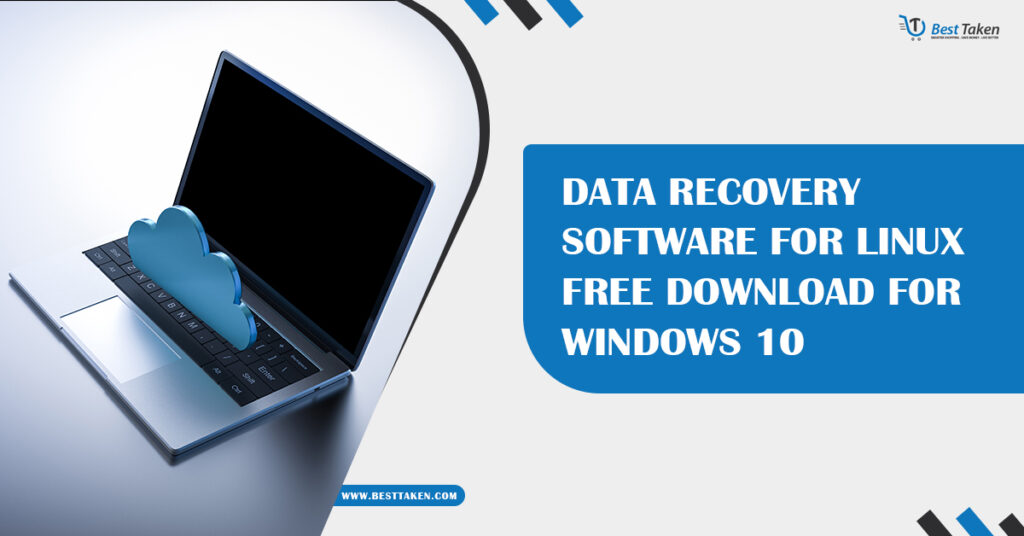This blog will explore some of the best data recovery software for Linux free download for Windows 10 to recover data from Linux partitions and file systems.
Full Explain Data Recovery Software for Linux Free Download for Windows 10
1. TestDisk & PhotoRec
TestDisk and PhotoRec are open-source, cross-platform recovery tools. While TestDisk is primarily used for recovering lost partitions and making non-bootable disks bootable again, PhotoRec specializes in recovering individual files such as photos, documents, and archives from storage devices.
Features of TestDisk & PhotoRec:
- Cross-platform support: Both tools work on Windows, macOS, and Linux.
- File system support: TestDisk supports multiple file systems, including Linux’s ext2, ext3, and ext4, which are common on Linux-based systems.
- Partition recovery: TestDisk is excellent for recovering lost partitions, fixing damaged boot sectors, and rebuilding partition tables.
- File recovery: PhotoRec can recover lost files from various media, including hard drives, USB flash drives, and memory cards.
- User-friendly interface: Though it operates through a command-line interface (CLI), TestDisk offers a step-by-step recovery process, making it accessible to users of varying technical expertise.
How to Use TestDisk/PhotoRec:
- Download and install TestDisk/PhotoRec from CGSecurity.
- Open the program and select the media or drive from which you wish to recover data.
- Follow the on-screen instructions to either recover a partition (TestDisk) or recover files (PhotoRec).
- Both tools are free and open-source, making them an excellent starting point for Linux data recovery.
Learn More: Revlon Hair Dryer Brush vs. Hair Straightener
2. Disk Drill for Windows
Disk Drill is another highly reliable data recovery tool available for Windows that can also recover files from Linux file systems. Though Disk Drill offers a paid version with more features, the free version allows users to recover up to 500MB of data. Disk Drill is well-regarded for its easy-to-use graphical interface and deep scanning abilities.
Features of Disk Drill:
- Cross-platform compatibility: Works on Windows and macOS, with the ability to recover data from Linux file systems such as ext2, ext3, and ext4.
- File system support: Recovers data from both FAT and NTFS, as well as Linux file systems.
- Data recovery from external devices: Disk Drill can recover files from external drives, USB flash drives, and memory cards.
- Partition recovery: In addition to individual file recovery, it can recover lost or deleted partitions.
- User-friendly interface: The software comes with a modern GUI that is easy to navigate, even for beginners.
How to Use Disk Drill:
- Download Disk Drill from the official website.
- After installation, open the application and select the storage device or partition you want to scan for lost files.
- The software offers both quick and deep scanning options, so select the one that suits your situation.
- Once the scan is complete, you can preview recoverable files and choose which ones to recover.
- Although Disk Drill’s free version has a data recovery limit, it’s ideal for small recovery tasks or evaluating the software before opting for the paid version.
3. R-Linux for Windows
R-Linux is another powerful, free data recovery tool designed specifically for Linux file systems, including ext2, ext3, and ext4. R Linux is part of the R Tools family, known for providing professional-grade data recovery solutions. It’s a great option for recovering lost files from Linux file systems while running on a Windows machine.
Features of R-Linux:
- Linux file system support: Works with ext2, ext3, and ext4 file systems.
- Raw file recovery: Recovers files from disks with damaged file systems by searching for known file types.
- User interface: R-Linux features a user-friendly GUI, making it easier for non-technical users to navigate.
- File recovery from formatted drives: R-Linux is capable of recovering files from formatted or corrupted partitions.
- Detailed scanning: Offers advanced features for scanning and recovering lost data.
How to Use R-Linux:
- Download and install R-Linux from the official R-Tools website.
- Launch the software and select the disk or partition containing the lost data.
- Choose the type of recovery (file or partition) and let the tool scan the drive.
- Once the scan is finished, chosing the files you want to recover.
- R-Linux is entirely free, offering professional-grade tools to anyone dealing with Linux file recovery issues.
4. Stellar Data Recovery
Stellar Data Recovery offers a robust tool for Windows users that can recover data from Linux-based file systems, among others. The software is attainable in both free & paid versions. The free version offers a limited amount of data recovery (up to 1GB), making it ideal for smaller recovery tasks.
Features of Stellar Data Recovery:
- Linux file system support: Supports ext2, ext3, and ext4, as well as FAT, NTFS, and other file systems.
- File preview: permit users to preview recoverable files before restoring them.
- Advanced scanning: The deep scan option thoroughly searches for lost data.
- Cross-platform capabilities: Works on Windows and macOS with Linux recovery features.
- External device recovery: Recovers data from external devices like USB drives and memory cards.
How to Use Stellar Data Recovery:
- Download Stellar Data rescue from the official website.
- Select the type of files you want to recover and choose the drive or partition to scan.
- The tool will scan the drive and display a list of recoverable files.
- Preview and choose the files to recover, then restore them to a safe location.
5. Extundelete
Extundelete is a command-line-based data recovery tool specifically designed to recover deleted files from ext3 and ext4 file systems. While it lacks a graphical interface, it’s a powerful tool for Linux file recovery that can be used from a Windows machine with the proper setup.
Features of Extundelete:
- Specialized for Linux file systems: Supports ext3 and ext4 file systems, which are common in Linux distributions.
- Command-line tool: Provides precise control over data recovery operations.
- Free and open-source: Extundelete is entirely free and open-source, making it a great choice for advanced users comfortable with CLI.
How to Use Extundelete:
- Install Extundelete on your system.
- Use the command-line interface to point Extundelete at the Linux partition containing the deleted files.
- Follow the instructions to recover the files to a specified directory.
Conclusion
When recovering data from a Linux partition on a Windows 10 machine, several free tools offer the capabilities you need to restore lost or corrupted data. Whether you prefer the user-friendly interfaces of tools like Disk Drill and R-Linux, or you’re comfortable using CLI-based tools like Extundelete, these options can help you retrieve your valuable data.
For the best experience, choose software based on the complexity of your recovery needs, file system type, and familiarity with the tools. These tools are free to download, giving you the opportunity to test them out and recover your data with minimal investment.



